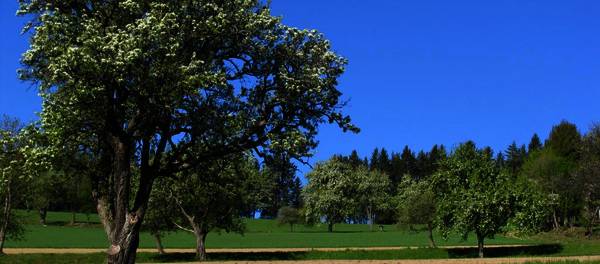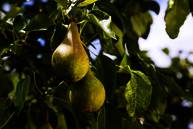Traditional orchards in Europe
Over the centuries, farmers in Western Europe and the Mediterranean region have developed distinct agroforestry systems: hedgerows, orchard meadows and traditional orchards, dehesa, chestnut- or olive groves. Farmers have introduced trees into their arable land and animals to the forests. Trees can also be the core of the farming system (e.g. olive, apple, chestnut trees or green oak of dehesa) or helping to optimise the production system (e.g. oak, beech and ash trees of hedgerows). European agroforestry systems in the North are limited by boreal and sarmatic forests, in the East by the steppes and in the west and the South by the sea. The ESTO project focuses on one type of these traditional agroforestry systems: Traditional orchards.
In 1930-1950 in Europe, about 2 millions hectares, mainly in France and Germany but also in Switzerland, Austria, Slovenia, Poland, England, Belgium and Spain, were covered by traditional orchards (“pré-verger” in French and “Streuobswiesen" in German). This form of fruit production was traditionally grown on arable land, undersown with crops or grassland. In 1960-2000 in Europe, this agroforestry system has significantly declined and lost about 50% of its expanse. Today fruit trees are only associated with permanent grassland, maintained through mowing or grazing (mainly cattle and sheep). The fruit production (apple, pear, cherry) is processed into different types of products: cider, apple juice, poiré, vinegar, calvados and cherry juice. Subsistence is still high but a part of the production is also sold in direct market often under different labels (organic production, Protected Designation of Origin, or private labels promoting the traditional orchard).
Traditional orchards are the archetype of sustainable agriculture
The traditional orchard is determined by low inputs, low labour and high biological diversity and landscape aesthetics. The low fruit production (10t/ha of apples) compared to specialised orchards (30-50t/ha) is compensated through grass production and a longer life cycle. The rentability of this system can be high, provided the farmer processes and valorises his product in direct market.
Containing different ecological niches and providing biomass, traditional orchards encourage the presence of auxiliaries, insectivorous and vole-eating birds, small carnivores, predatory insects (e.g. hoverflies, ground beetles, phytoseidae), parasitoids and pollinators. Their role in crop pest controlling is verified.
Traditional orchards are the archetype of sustainable agriculture: low inputs and low pressure on the environment and high quality produce. The amenity of this system is now recognised under cross-compliance and agro-environmental measures.
Traditional orchards have never been an unchanging form of heritage. Like all other farming practices and systems, it has evolved according to needs, technology, knowledge and social constraints. New varieties have been selected and preservation techniques used have been renewed. The quality of the products has been enhanced. It is because farmers strove to get the best out of their lands that traditional orchards developed and evolved. When farmers created traditional orchards, they were hoping to achieve different results, such as fodder and drinks production.











